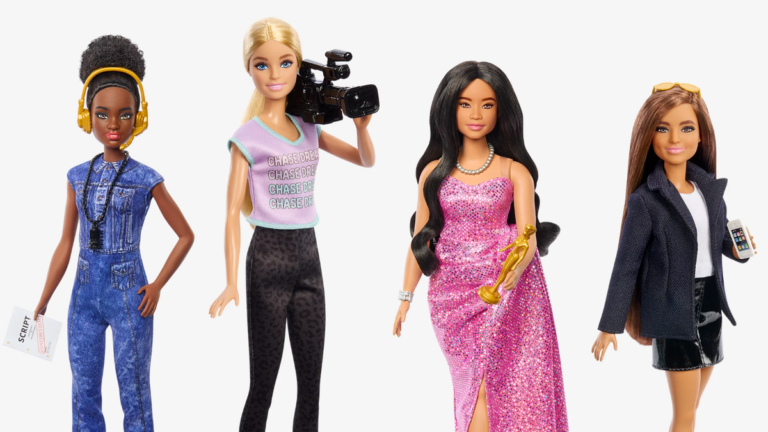The Rise of YouTube Obituary Videos and the Ethics Behind It
A few weeks ago, a friend of mine found out that a childhood classmate had died unexpectedly. They hadn’t stayed in touch, but he was sad and curious about what had happened, so he did what people do when they hear that someone they know has passed away: Googled her obituary.
What he found was odd—so much so that he texted to ask if I’d ever heard of such a thing. Along with pages hosting her official obit, he saw 10 separate YouTube videos of different people casually reciting information about her death.
He’s now part of a group united by an unsettling but increasingly commonplace experience. People who lose somebody, whether it’s a dearly cherished family member or a long-lost acquaintance, must now navigate a slimy cottage industry of profiteers trying to hijack their attention. Instead of finding important funeral details or where to write a remembrance or send flowers, they are confronted by a flood of low-budget videos crudely summarizing the death notices of the person they’ve lost.
Obituary pirating, where people scrape and republish obituaries from funeral homes and websites like Legacy.com, has been an ethically dubious business for years. Piracy websites are often skilled enough at search engine optimization to rise to the top of search results, and they use the resulting traffic to charge a premium for digital ads that appear next to text lifted wholesale from funeral homes, local newspapers, and other authorized obituary publishers. Occasionally, these pirate sites go a step further, manipulating bereaved people into buying sympathy gifts like candles or flowers and pocketing the money.
The flood of YouTube obituary videos is a janky update on this practice. Some of these channels upload dozens of death notice summaries every hour, abandoning any pretense of looking like an official source of information in an effort to churn out as many videos as they can.
Although text-based obituary pirating has been a scourge on the industry for years, these videos are a more recent phenomenon. “This is a new one for me,” says Jessica Koth, director of public relations for the National Funeral Directors Association. “These videos are not sanctioned or authorized by the funeral home or family of the person who died. I would imagine they would be quite upsetting to the families involved.”
Unhappy posts about the practice abound on Reddit, where for the past few years people have complained about how tasteless it is and wondered why it is happening and whether they can do anything to stop it. “These people are monetizing our loved ones’ deaths,” says one such message.
“It’s predatory toward people who are heavily grieving,” says another. “If there’s nothing that can be done about this, that’s extremely sad.”
The more prolific channels upload new videos every few minutes. Many look nearly identical and feature men sitting alone and speaking directly to the camera. They often appear to be lounging at home. (It’s hard to verify exactly where they are; I reached out to the proprietors of several accounts, but none responded.) Others narrate obituaries over corny slideshows of candles and photos of the deceased sourced from social media. Their subscriber numbers are modest, making it all even more puzzling; on the higher end, channels will have a few thousand subscribers and millions of overall views. The highest follower count I found was slightly over 26,000; the page with the highest views had a grand total of around 1.7 million.
Sometimes these obituary YouTubers promote products in the video description, like a $225 vitamin C cream for sale on Amazon. Sometimes they just list strings of SEO-baiting keywords, like “death,” “cause of death,” “die,” “RIP,” and “what happened.” While each channel differs from the next in small ways, there’s a unifying aesthetic—everything looks rushed and careless, and there’s no hint of emotion or acknowledgement that they’re discussing someone’s greatest tragedy.
“The audio is crappy, they’ve got fans on,” funeral marketing consultant Robin Heppell says. “It’s not professionally done.”
That’s because the business model focuses on quantity over quality. Many of the videos have no views at all; when they do, they rarely crack double digits. The success or failure of individual videos isn’t important, as long as they accumulate enough views in the aggregate.
Despite their shoddiness, the obituary YouTube channels are sometimes amassing enough followers and views to meet YouTube’s Partner Program requirements and start making money off advertisements.
Some of these YouTubers openly describe their projects as money-making ventures. Others make glancing attempts to defend what they do. One channel includes a disclaimer about how its videos are protected by the fair use doctrine. According to intellectual property lawyer Bhamati Viswanathan, this is likely true. “Bummer for the families, but I don’t see what they could do other than appeal to the creators on grounds of taste, sensitivity, basic kindness,” she says.
The obituary pirates aren’t the only group explicitly trying to ramp up engagement on death-announcement content. While if local papers presumably have the community’s interests in mind when they share death notices, those reading obits on YouTube seem to be in it solely for the clicks.
While some YouTubers exclusively post obituary content, others intersperse obituary readings with summaries of other news. One of these channels, Event Click, recently posted photos of an orangutan throwing a possum from its enclosure in Australia’s Perth Zoo. “I would presume it did not survive the fall,” says a robotic voice narrating the video.
Anjali Bal, a marketing professor at Babson College in Massachusetts, finds these videos “morbid and weird” and views the business strategy as ultimately short-sighted. They play on a surge of interest in keywords related to recent deaths, pumping out low-effort content in an attempt to capitalize on this temporary flow of web traffic.
While the YouTube obituary videos lack coherence and dignity, the most generous reading is that they recap information that audiences are seeking out in an easily-digestible form.
In the past, obituary pirates have been punished for their misdeeds. In 2019, for example, a Canadian website called Afterlife that scraped and republished obituaries was ordered to pay $20 million (CDN) in restitution to grieving families. But in more recent examples, the YouTuber obituary pirates tend to summarize information they’ve found online, rather than repeating it verbatim. While distasteful, it’s not illegal to callously recount the details of other people’s misfortune.
Considering how the obituary pirates on YouTube prioritize speed and volume above coherence and dignity, it’d be more surprising if they didn’t embrace artificial intelligence in their quest to profit off curiosity and heartache.
Source: The Bizarre Cottage Industry of YouTube Obituary Pirates







